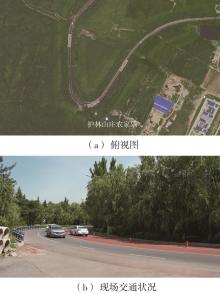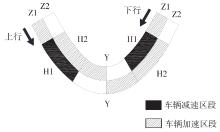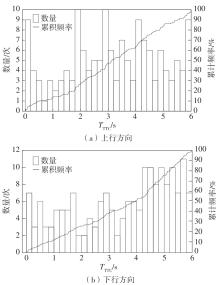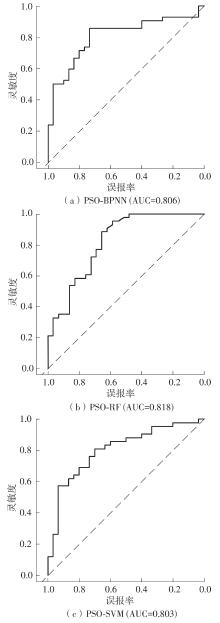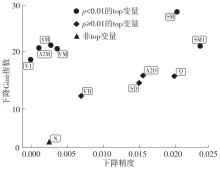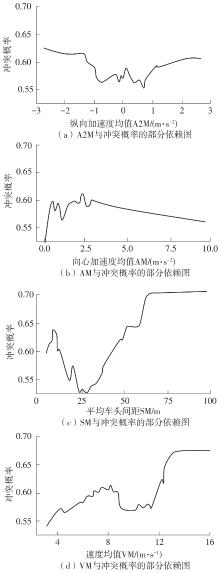| 1 |
赵晓华,关伟,黄利华,等 .急弯处警告标志位置对驾驶行为的影响研究[J].公路交通科技,2014,31(9):101-107.
|
|
ZHAO Xiaohua, GUAN Wei, HUANG Lihua,et al .Research on influence of warning sign position in sharp curve on driving behavior[J].Journal of Highway and Transportation Research and Development,2014,31(9):101-107.
|
| 2 |
陆欢,戢晓峰,杨文臣,等 .高原山区公路环境下交通事故形态致因分析[J].中国安全科学学报,2019,29(5):44-49.
|
|
LU Huan, JI Xiaofeng, YANG Wenchen,et al .Cause analysis of different patterns of traffic accidents on plateau mountain roads[J].China Safety Science Journal,2019,29(5):44-49.
|
| 3 |
OTHMAN S, THOMSON R, LANNER G .Are driving and overtaking on right curves more dangerous than on left curves?[J].Annals of Advances in Automotive Medicine,2010,54:253-264.
|
| 4 |
RAKOTONIRAINY A, CHEN S, SCOTT P B,et al .A novel approach to assessing road-curve crash severity [J]. Journal of Transportation Safety & Security,2015,7(4):358-375.
|
| 5 |
MCCARTT A T, NORTHRUP V S, RETTING R A .Types and characteristics of ramp-related motor vehicle crashes on urban interstate roadways in northern Virginia [J].Journal of Safety Research,2004,35(1):107-114.
|
| 6 |
ELVIK R .The more (sharp) curves, the lower the risk [J].Accident Analysis & Prevention,2019,133:105322.
|
| 7 |
ESSA M, SAYED T .Traffic conflict models to evaluate the safety of signalized intersections at the cycle level [J].Transportation Research Part C:Emerging Technologies,2018,89:289-302.
|
| 8 |
LU G, LIU M, WANG Y,et al .Quantifying the severity of traffic conflict by assuming moving elements as rectangles at intersection [J].Procedia-Social and Behavioral Sciences,2012,43:255-264.
|
| 9 |
TARKO A P .Estimating the expected number of crashes with traffic conflicts and the lomax distribution-a theoretical and numerical exploration [J]. Accident Analysis & Prevention,2018,113:63-73.
|
| 10 |
孟祥海,徐汉清,王浩,等 .基于TTC及DRAC的高速公路施工区追尾冲突研究[J].交通信息与安全,2012,30(6):6-10.
|
|
MENG Xianghai, XU Hanqing, WANG Hao,et al .Rear-end conflict of freeway work zone based on TTC and DRAC [J].Journal of Transport Information and Safety,2012,30(6):6-10.
|
| 11 |
VOGEL K. A Comparison of headway and time to collision as safety indicators [J].Accident Analysis & Prevention,2003,35(3):427-433.
|
| 12 |
谢济铭,秦雅琴,彭博,等 .多车道交织区车辆跟驰行为风险判别与冲突预测[J].交通运输系统工程与信息,2021,21(3):131-139.
|
|
XIE Jiming, QIN Yaqin, PENG Bo,et al .Risk discrimination and conflict prediction of vehicle-following behavior in multi-lane weaving sections [J].Journal of Transportation Systems Engineering and Information Technology,2021,21(3):131-139.
|
| 13 |
陆建,张文珺,杨海飞,等 .基于碰撞时间的追尾风险分析[J].交通信息与安全,2014,32(5):58-76.
|
|
LU Jian, ZHANG wenjun, YANG Haifei,et al .Analysis of rear-end risk based on the indicator of time to collision [J].Journal of Transport Information and Safety,2014,32(5):58-76.
|
| 14 |
FORMOSA N, QUDDUS M, ISON S,et al .Predicting real-time traffic conflicts using deep learning [J].Accident Analysis & Prevention,2020,136:105429.
|
| 15 |
柳本民,廖岩枫,涂辉招,等 .基于模拟实验的低等级公路车辆过弯风险预测模型[J].同济大学学报(自然科学版),2021,49(4):499-506.
|
|
LIU Benmin, LIAO Yanfeng, TU Huizhao,et al .Risk prediction model of vehicle driving in small radius curves based on simulation experiment [J].Journal of Tongji University (Natural Science),2021,49(4):499-506.
|
| 16 |
交通部公路安全保障工程技术组 .公路安全保障工程实施技术指南[M].北京:人民交通出版社,2007.
|
| 17 |
HAN B, WU Y, SONG Y .A novel active contour model based on median absolute deviation for remote sensing river image segmentation [J].Computers & Electrical Engineering,2017,62:209-223.
|
| 18 |
戢晓峰,谢世坤,覃文文,等 .基于轨迹数据的山区危险性弯道路段交通事故风险动态预测[J].中国公路学报,2022,35(4):277-285.
|
|
JI Xiaofeng, XIE Shikun, QIN Wenwen,et al .Dynamic prediction of traffic accident risk in risky curve sections based on vehicle trajectory data [J].China Journal of Highway and Transport,2022,35(4):277-285.
|
| 19 |
房锐,张琪,胡澄宇,等 .基于风险矩阵的干线公路弯道路段交通冲突风险评估模型[J].交通运输系统工程与信息,2021,21(2):166-172.
|
|
FANG Rui, ZHANG Qi, HU Chengyu,et al .Risk assessment model based on risk matrix for traffic conflict on arterial highway bend section [J].Journal of Transportation Systems Engineering and Information Technology,2021,21(2):166-172.
|
| 20 |
HAN H. The utility of receiver operating characteristic curve in educational assessment: performance prediction [J].Mathematics,2022,10(9):1493.
|
